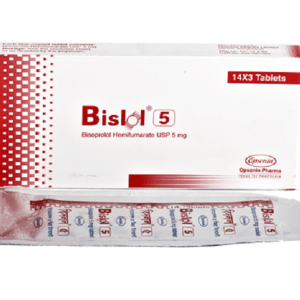Indication
Peptic ulcer disease, H. pylori infection, Gastro-oesophageal reflux disease, Zollinger-Ellison syndrome, Oesophagitis, Acid-related dyspepsia, NSAID-associated ulceration, ulcer resistant to H2 receptor antagonists, Gastrointestinal (GI) bleeding from stress, Prophylaxis for acid aspiration syndrome during induction of anaesthesia
Administration
Controlled-release: Should be taken on an empty stomach. Take 1 hr before meals. Swallow whole, do not chew/crush. Normal release: May be taken with or without food. IV Preparation GERD with a history of erosive esophagitis 15-min infusion: Reconstitute with 10 mL NS, THEN further dilute with 100 mL D5W, NS, or LR to final concentration of 0.4 mg/mL Zollinger-Ellison syndrome 15-min infusion: Reconstitute each vial with 10 mL NS, THEN Combine 2 vials and further dilute with 80 mL D5W, NS, or LR to total volume of 100 mL (concentration 0.8 mg/mL) 2-min injection: Reconstitute with 10 mL NS to final concentration of 4 mg/mL IV Administration Infuse over 15 min no more than 3 mg/min (7 mL/min) for GERD and 6 mg/min (7 mL/min) for pathologic hypersecretory conditions
Adult Dose
Erosive Esophagitis Associated With GERD Treatment: 40 mg PO qDay for 8-16 weeks Maintenance of healing: 40 mg PO qDay Alternatively, 40 mg IV qDay for 7-10 days Short-term Treatment of GERD Oral therapy inappropriate or not possible: 40 mg IV infusion over 15 minutes qDay for 7-10 days; switch to PO once patient able to swallow Zollinger-Ellison Syndrome 40 mg PO qDay; up to 240 mg/day administered in some patients 80 mg IV infusion q8-12hr up to 7 days; switch to PO once patient able to swallow Peptic Ulcer Disease Duodenal ulcer: 40 mg PO qDay for 2-4 weeks Gastric ulcer: 40 mg PO qDay for 4-8 weeks Elderly: No dosage adjustment needed. Hepatic impairment: Max: 20 mg/day or 40 mg on alternate days.
Child Dose
Erosive Esophagitis Associated With GERD <5 years: Safety and efficacy not established >5 years 15 kg to <40 kg: 20 mg PO qDay for up to 8 weeks 40 kg or greater: 40 mg PO qDay for up to 8 weeks
Renal Dose
Renal impairment: No dosage adjustment needed.
Contraindication
Concomitant use w/ rilpivirine, atazanavir and nelfinavir. Lactation.
Mode of Action
Pantoprazole is a substituted benzimidazole, and also known as PPI due to its property to block the final step of acid secretion by inhibiting H+/K+ ATPase enzyme system in gastric parietal cell. Both basal and stimulated acid are inhibited.
Precaution
Gastric malignancy should be ruled out. Consider Zn++ supplementation during IV therapy in patients who are prone to Zn++ deficiency. Pregnancy. Monitoring Parameters Monitor Mg levels prior to initiation and periodically during prolonged use. Lactation Risk Summary Pantoprazole has been detected in breast milk of a nursing mother after a single 40 mg oral dose of pantoprazole. There were no effects on the breastfed infant. There are no data on pantoprazole effects on milk production. The developmental and health benefits of breastfeeding should be considered along with the mother’s clinical need for PROTONIX and any potential adverse effects on the breastfed child from pantoprazole or from the underlying maternal condition.
Side Effect
1-10% Headache (>4%),Abdominal pain (4%),Facial edema (<4%),Generalized edema (<2%),Chest pain (4%),Diarrhea (4%),Constipation (<4%),Pruritus (4%),Rash (4%),Flatulence (<4%),Hyperglycemia (1%),Nausea (1%),Vomiting (>4%),Photosensitivity (<2%) Frequency Not Defined Angioedema,Atrophic gastritis,Anterior ischemic optic neuropathy,Hepatocellular damage leading to hepatic failure,Interstitial nephritis,Pancreatitis,Pancytopenia,Rhabdomyolysis,Risk of anaphylaxis,Stevens-Johnson syndrome,Fatal toxic epidermal necrolysis,Erythema multiforme
Pregnancy Category Note
Risk Summary Available data from published observational studies did not demonstrate an association of major malformations or other adverse pregnancy outcomes with pantoprazole. In animal reproduction studies, no evidence of adverse development outcomes was observed with pantoprazole. Reproduction studies have been performed in rats at oral doses up to 450 mg/kg/day (about 88 times the recommended human dose) and rabbits at oral doses up to 40 mg/kg/day (about 16 times the recommended human dose) with administration of pantoprazole during organogenesis in pregnant animals and have revealed no evidence of harm to the fetus due to pantoprazole in this study.
Interaction
Increased risk of digoxin-induced cardiotoxic effects. Increased risk of hypomagnesaemia w/ diuretics. May increase INR and prothrombin time of warfarin. May increase serum concentration of methotrexate and saquinavir. Delayed absorption and decreased bioavailability w/ sucralfate. Decreased absorption of ketoconazole, itraconazole. Potentially Fatal: May decrease serum levels and pharmacological effects of rilpivirine, atazanavir and nelfinavir.















Reviews
There are no reviews yet.